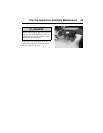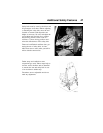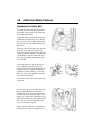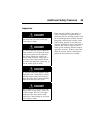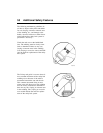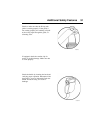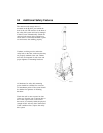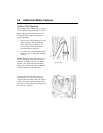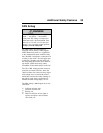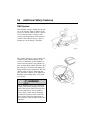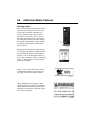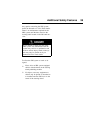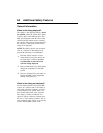
Additional Safety Features 53
Important Facts About Safety Belts in Heavy Trucks
The high mileage associated with heavy
trucks, the continual relative movement of
the seat with the cab, the possible contact
with the vehicle seat or other parts of the
cab structure, and the potential exposure of
this safety belt to severe environmental con-
ditions make it crucial to inspect the seat
belt system regularly. It is recommended
that the system is inspected every 15 000
miles (24 000 km) or more often if the ve-
hicle is exposed to severe environmental or
vocational conditions. Any safety belt sys-
tem that shows cuts, fraying, extreme or
unusual wear, significant discolorations due
to ultra-violet ray exposure, dusty-dirty
conditions, abrasion to the safety belt web-
bing or damage to the buckle, latch plate,
retractor, hardware or any other obvious
problem should be replaced immediately,
regardless of the mileage.
Once replacement of the safety belt has
been determined necessary, be certain that
it is replaced only with a Volvo original re-
placement safety belt. See your authorized
Volvo Truck dealer for replacement. Your
Volvo safety belt system has been devel-
oped and tested specifically for heavy
trucks. Replace it only with the exact same
design that the vehicle was equipped with.
If the inspection indicates that any other
part of the safety belt system requires re-
placement, the entire belt system must be
replaced. An installation guide is attached
to every replacement system, entitled
“Three-Point Safety Belt Installation
Guide.” There are separate safety belt
instruction guides for suspension and sta-
tionary seats. Use the proper guide for your
type of seat and follow the instructions
very closely. It is vitally important that all
components are mounted back in the same
positions as the original components that
were removed. This will maintain the de-
sign integrity of the mounting points for the
safety belt assembly.



